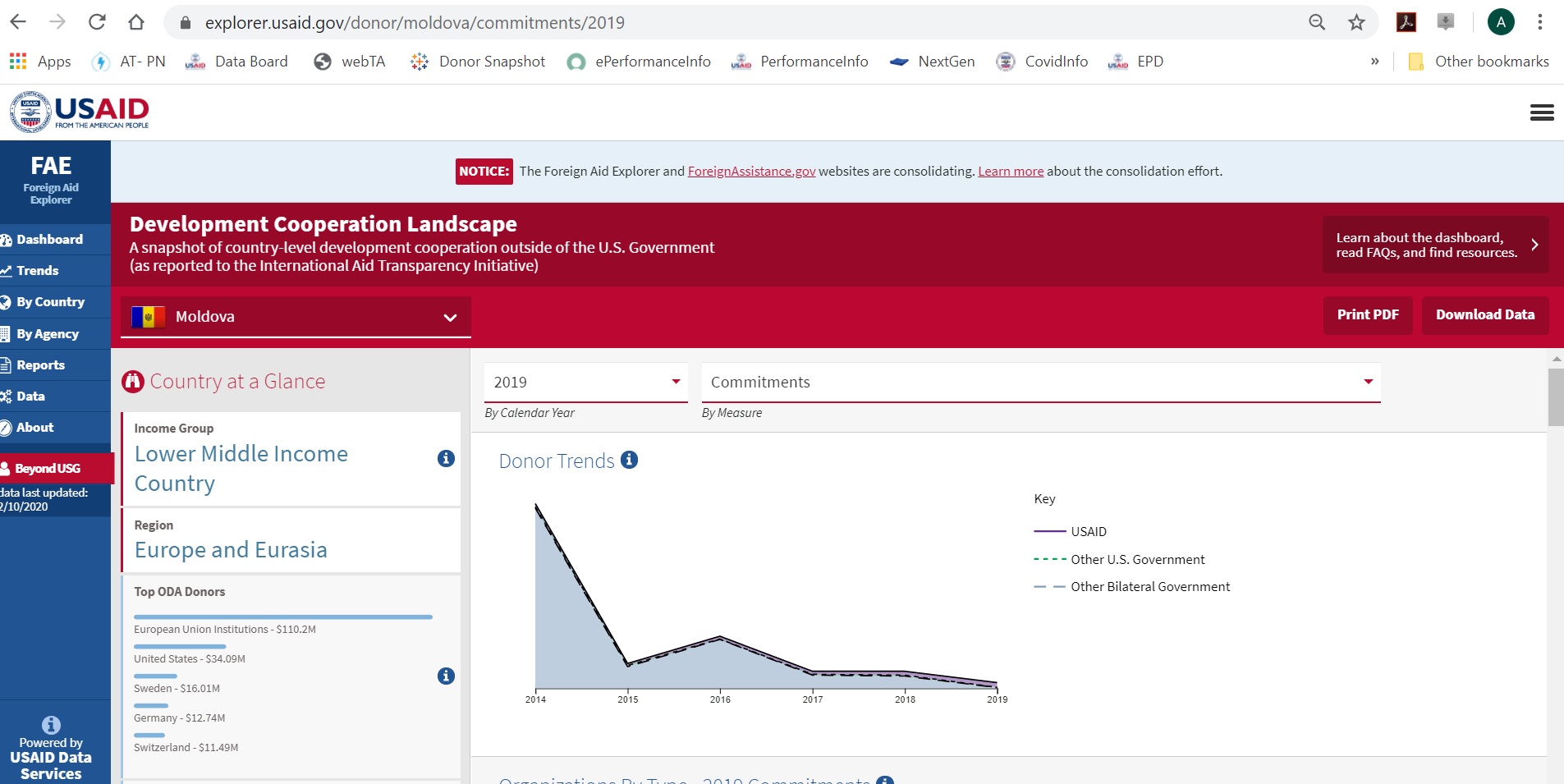Aid Transparency Index launches tomorrow
By George Ingram, Senior Fellow in the Global Economy and Development program at the Brookings Institution.
Publish What You Fund, the global campaign for aid transparency, tomorrow releases its seventh Aid Transparency Index. The Brookings Institution and Friends of Publish What You Fund are joining Publish What You Fund in a public release of the 2020 Index report, along with a brief on how U.S. government agencies fair in the Index.
The Index covers five U.S. agencies – Millennium Challenge Corporation (MCC), U.S. Agency for International Development (USAID), Department of State, President’s Emergency Plan for AIDS Relief (PEPFAR), and the Department of Defense.[1]
The Index rates 47 major donor agencies, including bilateral donors, multilateral development finance institutions (DFIs), humanitarian agencies, vertical funds, intergovernmental organisations and a philanthropic foundation. The purpose of the index is threefold: to inform donors on how well they are doing and of any gaps in publishing aid data to the International Aid Transparency Initiative (IATI); to collaborate with donor agencies during the scoring process to help them improve their reporting; and, to provide recommendations for further improvement. Most donors welcome the technical advice provided by Publish What You Fund staff to improve their reporting.
Although the specifics of how the U.S. agencies score are confidential until tomorrow’s formal release, the report on the five U.S. agencies includes some excellent news, some fair news, and some not so good news.
Particularly noteworthy is the shout-out in the brief to a recent USAID innovation, the Development Cooperation Landscape tool. One challenge we all have faced is how to present IATI data in a way that makes it easy to access and use. Responding to demands from USAID field missions – the need to access IATI data so as to know what other donors are doing in their respective countries – USAID has developed a web-based tool that serves this purpose. As part of the launch tomorrow, we will have one of USAID’s mission directors on the panel who can talk more about this new tool.
As a preview — the Development Cooperation Landscape, linked to USAID’s aid data web reporting dashboard FAE.gov, provides a range of data points, including level of aid to a country from its major donors, a five-year trend line of assistance to the country, data by sector and sub-national location, planned aid, and more detailed information on aid activities by a variety of implementers, all searchable by various filters. Finally, there are easy and user-friendly ways to download and print the visualized data. (See screenshot below)

This new tool is an important source of information for missions. In fact, it is a quandary how USAID missions could function effectively without this data, for multiple reasons. Knowing what other donors are doing is essential information for planning, particularly for the five-year Country Development Cooperation Strategy. The data allows missions to know where they overlap with other donors and where there are important gaps in assistance. The data allows missions to plot out donors with whom to cooperate in specific sectors and regions of the country. It allows a more informative engagement with government ministries, other national institutions, and civil society as to what sectors and geographic areas USAID should be providing support.
But it is useful well beyond USAID. It is a public website available to all. Host government ministries now have one place to go for reviewing the assistance landscape in their countries. Ministries of finance and budget offices can view the totality of incoming assistance with specific organizations identified. Ministries such as health and education can see how much and what projects are active in their realm of responsibility.
Further, the data is available to local NGOs that track assistance and engage in policy advocacy. Media can use the data to check and report on assistance programs. Local and international development implementers can discover what other organizations and projects are active in their area of activity. It provides updated, important data for researchers. For example, for a project researching areas in which the U.S. and Korean aid agencies might collaborate in the lower-middle income countries in Southeast Asia, I have used the tool to identify assistance levels and specific projects of those two donors in specific countries. It provides a level of granularity not otherwise available. For example, whereas the OECD-DAC database provides assistance levels broken down into broad sector categories, the Development Cooperation Landscape provides information on individual projects so one can identify where funders are engaged in similar activities within a sector.
Tune in tomorrow to learn how Publish What You Fund and IATI are advancing the field of aid transparency and which U.S. agencies are performing well and not so well.
George Ingram is a Senior Fellow in the Global Economy and Development program at the Brookings Institution and also serves as Chair Emeritus of the US Global Leadership Coalition (USGLC). George’s professional career – in Congress, the executive branch, and the non-profit sector – has focused on international economic and development policy. He was recently Co-chair of the Modernizing Foreign Assistance Network and previously worked for Academy for Educational Development, where he became Senior Vice President for public policy and briefly served as Interim President and CEO. He also held positions as Principal Deputy Assistant Administrator at the Agency for International Development (USAID), Vice President of Citizens Democracy Corps, and Senior Staff Member at the House Committee on Foreign Affairs. George serves as the Chair of the Board of Friends of Publish What You Fund.
Note:
[1] As the Development Finance Corporation (DFC) is so new and still being stood-up, it is not included in this year’s scoring, but will likely be a candidate for future indexes.

